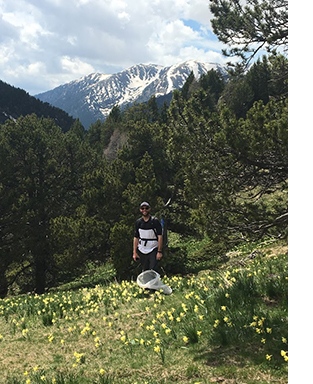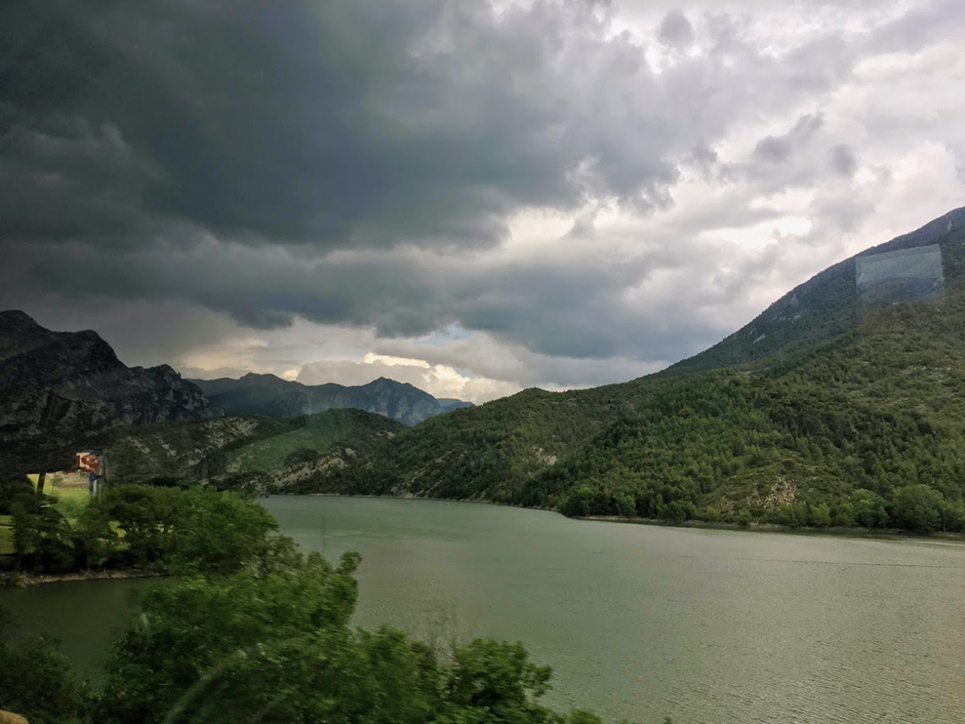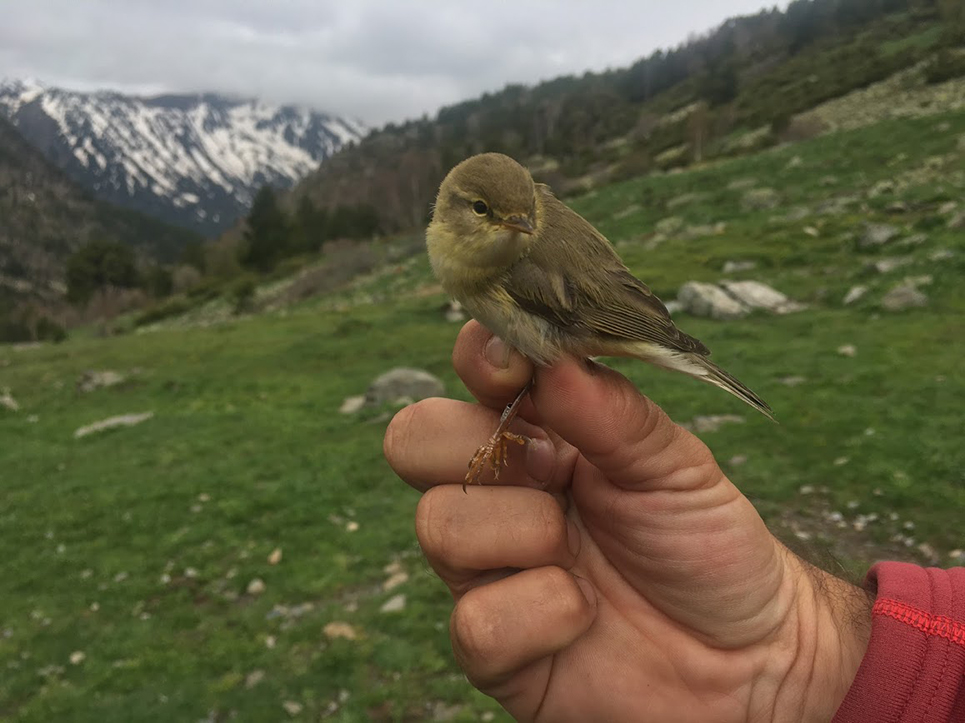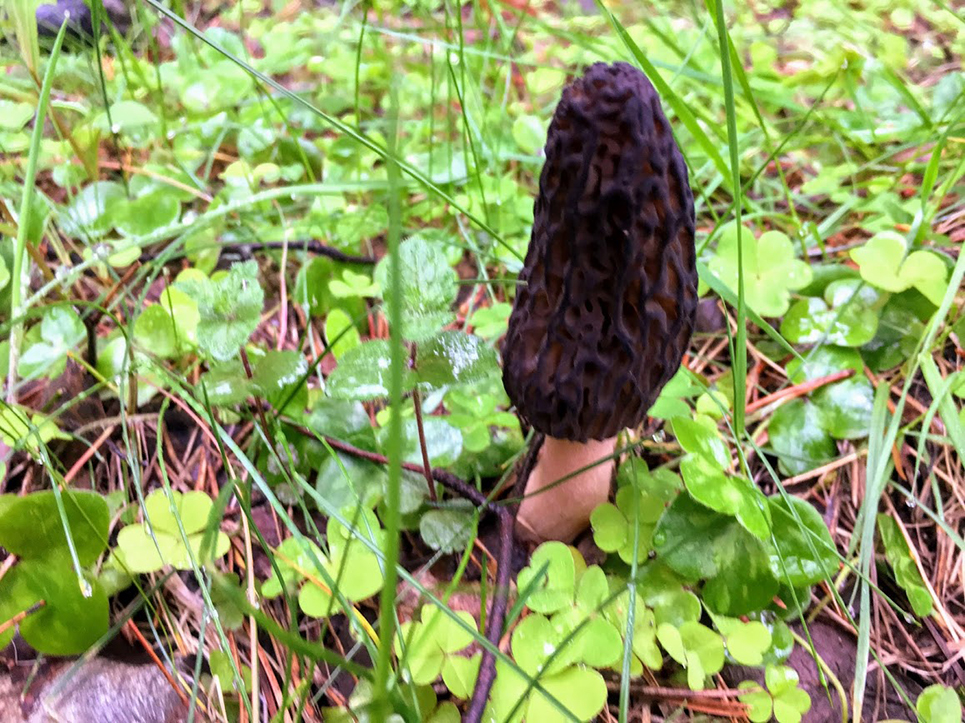.
Wildlife in the (Life)Changing Andorran Pyrenees
By Kyle Gaw, Earthwatch Digital Marketing Manager

I’d be lying if I said I wasn’t a little nervous the weeks leading up to my adventure on Earthwatch’s Wildlife in the Changing Andorran Pyrenees expedition. This trip was set to provide a number of firsts for me: my first time traveling alone, first trip to Europe, my first time on an Earthwatch expedition. And as much as I was able to mentally prepare to meet the challenges that any of those scenarios would present, I realize now that there was no way for me to fully prepare for the whirlwind of emotions that this trip would provide.
The adventure began as soon as I disembarked from my plane after the eight-hour flight from Boston to Barcelona. My flight arrived early so I decided to sit at the airport cafe and take in the scene with a coffee in hand while I waited for my fellow volunteers to arrive. I watched other travelers at the airport and wondered which of them would join me for the next week. Soon after, I saw a cluster of people beginning to form at the rendezvous location. I gathered my belongings, took a deep breath, and walked over to the group of smiling strangers.
The first person I met was the project’s Principal Investigator (PI), or lead scientist, Dr. Bernat Claramunt. I can’t say “to my surprise, he was incredibly friendly” because it wasn’t exactly a surprise. One of the reasons that I wanted to join this trip in particular is because of the fantastic reputation that Bernat has. It’s not unusual for Earthwatch’s PIs to have their praises sung when volunteers return from the field. These scientists are incredibly passionate about what they do and volunteers are constantly telling us about how this passion inspired them to change the way they see the world—it might sound hyperbolic but it’s true nonetheless. Volunteer reviews, combined with the high acclaim that Bernat and his team receives from my Earthwatch coworkers, helped to ease some of my tensions leading up to the trip. So, the fact that I instantly felt as though we were old friends reacquainting rather than complete strangers came as no surprise.
It wasn’t before long that Bernat’s congeniality permeated through the rest of the group. Conversations around personal backgrounds, motivations for joining the expedition, and expectations of the trip moved quickly from one volunteer to the next.

View out the window of the bus ride from Barcelona to Ordino.
Once everyone arrived and had been introduced, we made our way to the bus to start the 3.5 hour journey from Barcelona, Spain to Ordino, Andorra. I’m going to be honest here, when I read in the expedition briefing (one of the materials Earthwatch provides to its volunteers to prepare them for the trip) and learned that I’d have to travel almost four hours from the airport to the field site, I was… less than enthused. After traveling for 8+ hours, boarding a bus was not high on my wish list. However, to my surprise, the trip went by in a flash. What I remember from that leg of the journey is getting lost in the spectacular views of the Spanish countryside and feeling in that moment that I was living in a dream, only to be awoken when we arrived at the hotel that I’d be calling home for the next nine days.
The next morning, we got out of bed early to get some food in our stomachs before we began Day 1 of field research. After eating and getting dressed, we embarked on the short trip from the hotel to the field site to get our first taste of authentic field research. Upon arrival, we were greeted by a Willow warbler that had been caught in a mist net—a large nylon net that biologists use to capture birds for banding and measuring.
We learned that the small bird had traveled all the way from Africa, across the Sahara, to spend its summer in the Andorran Pyrenees. The research team explained the ways in which tracking birds in this manner can help them to assess the possible impacts of climate change. We took measurements of the bird’s wingspan, weight, sex, and fat content then let the bird go on its way.
As I continued on for the rest of the day, the thought of that little bird and its migratory pattern stayed with me. While learning about birds and how they migrate is something that we covered in elementary school, this was the first time that I was able to truly comprehend how impressive that journey is. This was the moment that things began to click for me—the moment when I began to truly understand what Earthwatch is all about.

Willow warbler after being tagged and measured by the research team.
Overall, the aims of this project are simple. The team wants to study the landscape of the Andorran Pyrenees and uncover ways in which climate change is altering it. Researchers are able to assess the impact of climate change by studying the ways that plants and animals change over time. For example, scientists predict that mammals that typically dwell at lower elevations will migrate uphill due to the effects of climate change. One of the volunteer tasks for this project is to humanely capture, tag, measure, and release animals to monitor these changes.
My experience with my new avian friend would serve as the first of countless close-up encounters with nature that this project would provide over the next nine days. Each day, I’d wake up more excited than the last to reenter the field, hike up a mountain, and start whatever projects Bernat and his team had laid out for us that day. The science wasn’t limited to the ornithological variety, by the way; we went on to study insects, biodiversity, tree growth, and fungi in the area.
I never thought I would be excited see a mushroom in the woods until I saw a morel growing in the wild for the first time. What I did not know was that not only are these mushrooms a rare find, they typically grow in areas where a wildfire has razed the forest. Discoveries such as this help scientists to understand how fungi growth responds to changing environments such as a warmer summer, or changes in the precipitation regime—factors that affect tree growth, soil activity and the local economy of the forest.

A wild Morel mushroom growing in the foothills of the Andorran Pyrenees.
When the expedition came to its inevitable conclusion, I felt a mix of emotions. I was sad to part ways with my fellow volunteers who had gone from being strangers to friends in a short span of time. I felt a sense of accomplishment knowing that, even if in a small way, the work that I did would help to provide evidence of the impacts of climate change. In fact, the research team is hoping this project will serve as a model for how to effectively preserve biodiversity in other areas of the world.
Finally, I felt empowered to take what I had learned in the field and take action in my own life. I’m already taking small but meaningful steps, turning off the water tap when it’s not in use, walking to work whenever I can, and limiting my use of disposable goods, all in an effort to reduce my contribution to the effects of climate change. I worked at Earthwatch for over a year before joining my first expedition, and I admit that on some days, after hearing about a volunteer’s “transformational Earthwatch experience,” I would question how transformational 7–10 days really could be. Now, after having had done it myself, I am left wondering what there ever was to question.
.
Sign up for the Earthwatch Newsletter
Be the first to know about new expeditions, stories from the field, and exciting Earthwatch news.